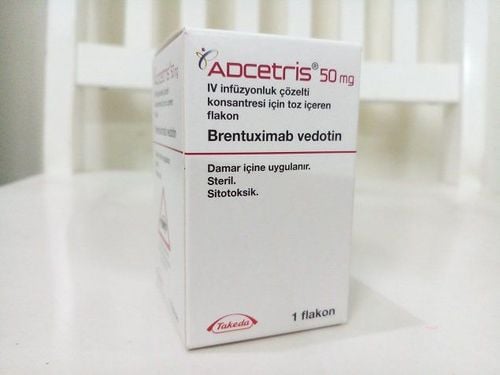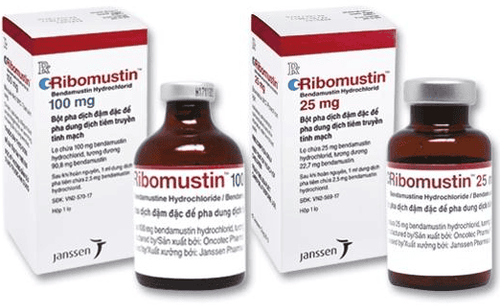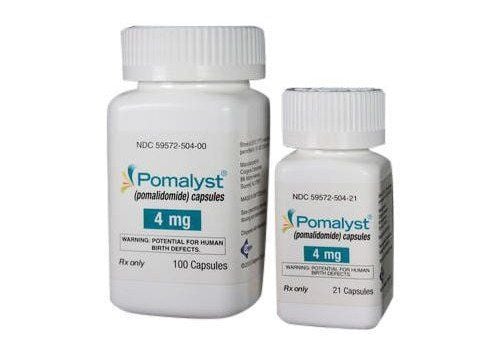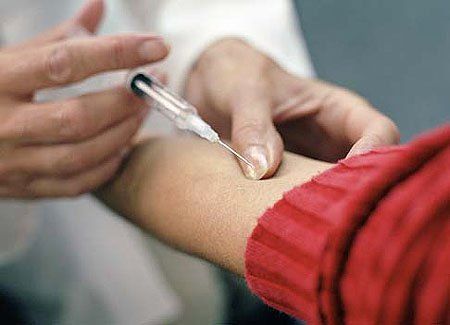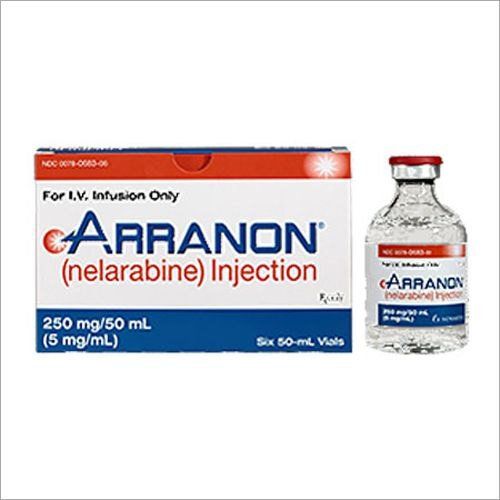This is an automatically translated article.
AIDS-related lymphoma is a disease in which malignant (cancerous) cells form in the lymphatic system of patients with immunodeficiency syndrome (AIDS). So is AIDS-related Lymphoma dangerous? How is HIV infection with blood cancer treated? Find out information about AIDS-related Lymphoma through the article below.
1. What is AIDS-related Lymphoma?
AIDS-related lymphoma is a disease in which malignant cancer cells are found in the lymphatic system of a patient with AIDS.
The lymphatic system is made up of thin tubes with many branches, like blood vessels, and it's all over the body. Lymphatic vessels are a colorless, watery fluid that contains white blood cells called lymphocytes. The network of blood vessels are groups of small bean-shaped organs called lymph nodes. Lymph node clusters produce and store infection-fighting cells. The spleen, an organ in the upper abdomen that makes white blood cells and filters old blood cells out of the blood; the thymus, a small organ below the breastbone; and the tonsils, an organ in the throat, are part of the lymphatic system.
Due to the presence of lymphatic tissue in many parts of the body, cancer can metastasize to most organs or tissues of the body including the liver, bone marrow (the spongy tissue inside the large bones of the body that makes up the body). blood cells), spleen or brain.
Lymphomas are divided into two general types, Hodgkin lymphoma and non-Hodgkin lymphoma. Types of non-Hodgkin lymphoma are classified according to how far they have spread: low-grade, intermediate-grade, or high-grade. Intermediate or high-grade lymphomas grow and spread more quickly than low-grade lymphomas.
Both major types of lymphoma - Hodgkin's lymphoma and non-Hodgkin's lymphoma, especially the more aggressive, intermediate, and high-grade lymphomas - can occur in adult and pediatric AIDS patients. .
2. How is HIV infection with blood cancer treated?
2.1. Treatment for AIDS-related Lymphoma The research institute is home to many breakthroughs in the treatment of both HIV, AIDS and cancer. A place that provides the most advanced treatments through clinical trials.
Treatment for AIDS-related lymphoma usually includes a combination of chemotherapy drugs, sometimes in addition to radiation therapy. Because cancer treatment can weaken a patient's immune system, doctors may use lower doses of the drug than in lymphoma patients without AIDS.
Drugs that treat HIV by strengthening the immune system can also help the body fight cancer. The doctor's aim is to cure lymphoma.
2.2. Treatments Treatment for AIDS-related lymphoma includes laboratory studies, imaging studies, and biopsies. Specific treatment options should be guided by the patient's signs and symptoms.
2.3. Laboratory studies Laboratory studies include the following:
Check for differences in the complete blood count. Complete Metabolic Panel (CMP) Lactate dehydrogenase (LDH) Tumor lysis tests (potassium, phosphorus, calcium, uric acid) CD4 count HIV viral load Hepatitis B and C screening 2.4. Imaging studies and procedures Positional emission tomography (PET) or computed tomography (CT) scans are commonly used.
Bone marrow biopsy is done for leukemia cases with no known cause. Alternatively, endoscopy or bronchoscopy may be considered if gastrointestinal (GI) or pulmonary involvement is suspected.
If central nervous system (CNS) involvement is suspected, neuroimaging with contrast-enhanced MRI or CT and lumbar puncture is recommended. All patients with HIV-associated Burkitt lymphoma and select patients with high-risk diffuse large B-cell lymphoma (DLBCL) of central nervous system involvement should undergo neurologic evaluation. center.
Analysis of cerebrospinal fluid (CSF) should include the following studies:
Cell count Protein and glucose levels Cytology, Flow cytometry studies Immunoglobulin heavy chain (IgH) rearrangement studies Reaction polymerase chain reaction (PCR) for Epstein-Barr virus and JC 2.5 virus. Histological evaluation of AIDS-associated Lymphoma Histological confirmation is usually obtained by biopsy of the involved tissue. Special or multiple core biopsies are preferred, while fine-needle aspiration (FNA) is suboptimal.
In primary CNS lymphoma, diagnosis can also be made by evaluating the cerebrospinal fluid. In primary effusion lymphoma, the diagnosis can also be obtained from malignancies with human herpesvirus 8 (HHV-8) in the effusion or ascites specimen.
2.6. Treatment considerations The optimal treatment for lymphoma has yet to be determined.
The treatment regimen is determined by histopathological classification and stage, along with the patient's performance status. Comorbidities, including CD4 cell count, HIV viral load, and history of AIDS-related complications.
In general, AIDS-associated lymphoma treatments are extrapolated from non-AIDS-associated lymphoma treatments, in addition to antiretroviral therapy (ART). However, several recent prospective studies have clarified the treatment of these lymphomas.
Although ART and chemotherapy can have many side effects that can make treatment more difficult, all patients should be started on both ART and chemotherapy, as concomitant therapy time will yield better results. ART should be continued for the duration of chemotherapy.
Because of HIV-related immunosuppression, which may worsen with chemotherapy, all patients - regardless of CD4 cell count - should be initiated on prophylaxis against Pneumocystis jiroveci pneumonia (PJP) and toxoplasmosis.
It should be noted, the role of rituximab in AIDS-associated lymphoma is not well defined, as rituximab-induced humoral and cellular immunodeficiency is exacerbated by HIV infection. Therefore, the addition of rituximab is generally recommended for CD20+ disease when the CD4 count is above 50/μL.
3. Care and treatment of HIV-infected patients with blood cancer
3.1. Diffuse large B-cell lymphoma (DLBCL) Common chemotherapy options used in the initial treatment of AIDS-related DLBCL) are indicated for patients with lymphoma. or lymphoid involvement with bone marrow, testis, sinus, or epidural involvement.
3.2. Burkitt lymphoma Common chemotherapy options in AIDS-associated Burkitt lymphoma are recommended in all patients with Burkitt lymphoma.
3.3. Plasmablastic lymphoma For plasmablastic lymphoma, an aggressive type of lymphoma primarily observed in people with HIV, the National Comprehensive Cancer Network (NCCN) guidelines recommend treatment initially with a more intensive regimen such as the following
CODOX-M-IVAC HyperCVAD (cyclophosphamide, vincristine, doxorubicin [Adriamycin], dexamethasone, administered on a hyperfractionated schedule) dose-adjusted EPOCH for autologous SCT should be considered in complete remission in high-risk patients.
3.4. Hodgkin lymphoma Treatment of Hodgkin lymphoma in HIV-positive patients should be staged, as follows:
Two cycles of ABVD (doxorubicin, bleomycin, vinblastine, dacarbazine) with 20 Gy associated field radiation with mild patients Four cycles of ABVD followed by 30-Gy field radiation therapy for patients with advanced disease. Six cycles of BEACOPP (bleomycin, etoposide, doxorubicin, cyclophosphamide, vincristine, procarbazine, prednisolone) or ABVD in critically ill patients. 3.5. Primary CNS lymphoma For primary CNS lymphoma patients with adequate renal function, high-dose methotrexate, 3 g/m2 every 2 weeks, for 6-8 doses, results combined with ART for effective.
A retrospective study of 51 patients with primary HIV-associated CNS lymphoma treated with high-dose methotrexate in combination with ART showed a median survival of 5.7 years.
The addition of rituximab to methotrexate is not effective, especially in the HIV-positive community.
For patients who cannot tolerate high doses of methotrexate, there is little evidence for alternative drugs. However, whole brain radiation or temozolomide may be considered.
3.6. Primary effusion lymphoma Standard treatments, such as CHOP, are ineffective in patients with primary effusion lymphoma (PEL). Therefore, PEL patients should be clinically tested if. Newer treatments include bortezomib, lenalidomide, or daratumumab.
4. Notes for people with AIDS-related Lymphoma
4.1. Treatment of recurrent or refractory disease Recurrent, refractory disease is treated similarly to HIV-negative disease, with platinum-based salvage regimens such as ICE (ifosfamide, carboplatin, etoposide), DHAP (dexamethasone, high-dose cytarabine [ARA-C], cisplatin [Platinol]), or GDP (gemcitabine, dexamethasone, cisplatin) followed by autologous stem cell transplantation. Several clinical trials have shown that intensive regimens, followed by high-dose chemotherapy and autologous bone marrow and stem cell transplantation are feasible and effective in AIDS-associated lymphoma. Relapsing or refractory to chemotherapy.
Chimeric antigen receptor (CAR) T-cell therapy has been effective in the treatment of relapsed, refractory cases of some types of NHL and is recommended in patients with stable or progressive disease despite treatment. treated. However, no studies have been performed to specifically evaluate CAR T-cell therapy in HIV-positive populations.
Allogeneic stem cell transplantation has been performed in selected cases of recurrent HIV-associated lymphoma in patients receiving combination antiretroviral therapy. Both reduced-intensity conditioning and myeloproliferative regulation have been shown to be feasible. However, with the limited amount of experience and the lack of data on long-term efficacy, no firm conclusions can be drawn.
4.2. Supportive Care All patients with AIDS-related lymphoma will receive care such as:
Support 24-48 hours after chemotherapy and continuing treatment to restore formula blood of each cycle. Continue PJP prophylaxis until CD4 > 200/μL after completion of chemotherapy. Provide antibiotic prophylaxis with quinolones during neutropenia. Withhold azole antifungals 24 hours before to 24 hours after chemotherapy with drugs that metabolize CYP3A4. Provide Mycobacterium avium complex (MAC) prophylaxis for patients with CD4 <100/μL. Particular consideration for varicella-zoster virus/herpes simplex virus (VZV/HSV) prophylaxis consultation with an infectious disease specialist for febrile neutropenia is encouraged in the setting widespread prophylactic treatment and intractable diarrhea.
5. Schedule for patients
Initially, follow-up visits are scheduled every 3-4 months, depending on the individual patient, but these can be adjusted according to the medical condition required.
These visits are used to monitor response to treatment and provide psychosocial support to the patient.
During follow-up visits, it is important to ask the patient about structural symptoms, new lymphadenopathy, or pain; Patients should be educated about reporting any signs and symptoms to a physician.
The physical examination should focus on enlarged lymph glands and an enlarged liver or spleen. Laboratory work should be repeated, including a minimum of differentiated complete blood cell counts and a comprehensive metabolic panel. Imaging should only be done if recurrent disease is suspected.
Please dial HOTLINE for more information or register for an appointment HERE. Download MyVinmec app to make appointments faster and to manage your bookings easily.
References: ucsfhealth.org, emedicine.medscape.com



